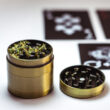
Cannabis Ruderalis is a distinct type of cannabis that, unlike its more popular relatives Cannabis indica and Cannabis sativa, has adapted to the harsh climates and short growing seasons of the northern regions. Often overlooked in the cannabis family, It offers unique characteristics that are increasingly valued in the cannabis breeding and medical communities.
Understanding Ruderalis: The Basics
Cannabis Ruderalis is typically smaller and more robust than its counterparts. It is characterized by its ability to flower automatically after a few weeks, regardless of the light cycle, a trait known as auto-flowering. This capability is genetically inherent, distinguishing Ruderalis from other types of cannabis that require specific lighting conditions to flower.
Historical Background of Ruderalis
Originating from Central Asia, Ruderalis spread across the eastern European and Russian landscapes, adapting to the challenging environments. Historically, it was not considered valuable for psychoactive properties due to its low THC content, but recent breeding programs have sought to harness its robust genetics and auto-flowering traits.
Characteristics of Ruderalis
Growth Patterns and Plant Structure
The plant is generally hardy and compact, an evolutionary adaptation to its native climates. It typically grows between 20-25 inches tall, making it significantly shorter than indica or sativa varieties.
Genetic Traits and Adaptations
Ruderalis plants have a thick, fibrous stem that helps them withstand colder and windier climates. The leaves are smaller and less dense, which may contribute to its lower THC levels but also allows for quicker growth cycles.
Ruderalis in Cultivation and Breeding
The Role in Hybridization
The auto-flowering trait of Ruderalis has been a game-changer in cannabis cultivation, allowing breeders to produce strains that flower more quickly and are suitable for northern climates. This has opened up new avenues for cultivating cannabis in regions previously considered unsuitable.
Techniques for Cultivating
Growing Ruderalis requires different techniques compared to other cannabis types due to its unique flowering cycle and growth habits. Cultivators must adjust their schedules and care routines to accommodate the plant’s auto-flowering nature.
Medical and Recreational Uses of Ruderalis
Therapeutic Benefits
Cannabis Ruderalis, though low in THC, is rich in CBD, making it an excellent choice for medical cannabis users seeking the therapeutic benefits without the psychoactive effects. Its properties are particularly beneficial in treating conditions such as anxiety, epilepsy, and chronic pain.
Comparing Recreational Effects: Ruderalis vs. Others
For recreational users, Ruderalis strains may offer a milder and more manageable experience, suitable for those sensitive to the stronger effects of THC-heavy strains. This makes it an appealing option for novice users or those who prioritize functionality over intensity.
Legal Status and Regulations
Overview of Cannabis Legislation Worldwide
The legal landscape for cannabis, including Ruderalis, varies widely across the globe. Some countries embrace medical cannabis, while others have strict prohibitions. Understanding these regulations is crucial for anyone involved in the cultivation, distribution, or use of Ruderalis strains.
Specifics of Ruderalis Regulation
As part of the broader cannabis market, Ruderalis is subject to the same legal scrutiny as other types. However, its unique characteristics could influence specific legal considerations, particularly in regions prioritizing medical over recreational use.
Challenges and Future of Ruderalis
Current Challenges in Cultivation
While auto-flowering and hardiness are advantageous, the lower THC content and smaller size of Ruderalis pose challenges in a market driven by high potency and yield. Addressing these issues requires innovative cultivation techniques and genetic research.
Future Prospects and Research Directions
The future for Ruderalis is promising, with potential for genetic advancements that could enhance its desirable traits while overcoming its limitations. Research into its auto-flowering gene could revolutionize cannabis cultivation, making it more accessible and efficient.
Conclusion
Cannabis Ruderalis, often overlooked in the shadow of its more famous cousins, holds a pivotal role in the future of cannabis cultivation. Its unique characteristics and adaptability make it a valuable subject for research and development. As legal frameworks evolve and interest in diverse cannabis products grows, Ruderalis is poised to become a significant player in the global cannabis market. Understanding and leveraging its unique traits could lead to breakthroughs in medical treatments and cultivation techniques.












